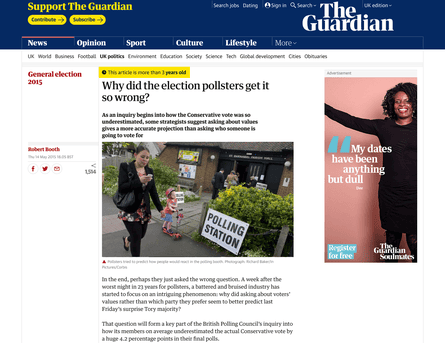Indicators on News Articles You Should Know
Indicators on News Articles You Should Know
Blog Article
What Does News Articles Mean?
Table of ContentsThe smart Trick of News Articles That Nobody is DiscussingNews Articles Fundamentals ExplainedNews Articles Things To Know Before You BuyThe Only Guide for News ArticlesSome Known Details About News Articles
Excellent understanding of different topics provides students a competitive edge over their peers. Despite the fact that digital and social media are conveniently obtainable, we must not neglect how vital it is to check out the newspapers. Moms and dads must try and inculcate the practice of checking out a paper as a day-to-day regimen to proceed the legacy of the revered print tool.News stories likewise include at the very least one of the adhering to crucial qualities relative to the designated audience: closeness, prominence, timeliness, human interest, peculiarity, or repercussion.
Within these limits, newspaper article likewise aim to be extensive. Nonetheless, various other elements are involved, some stylistic and some originated from the media kind. Among the bigger and extra respected newspapers, fairness and balance is a significant factor in providing information. Commentary is normally restricted to a different section, though each paper may have a different total angle.
Papers with a worldwide audience, for example, tend to make use of a more formal design of creating. News Articles.; common design guides consist of the and the US Information Style Book.
News Articles Can Be Fun For Anyone
Generally, journalists will not utilize a lengthy word when a short one will certainly do. They use subject-verb-object building and construction and dazzling, energetic prose (see Grammar). They supply narratives, examples and metaphors, and they hardly ever depend upon generalizations or abstract ideas. Information authors try to prevent utilizing the exact same word greater than when in a paragraph (occasionally called an "echo" or "word mirror").
Headlines in some cases leave out the subject (e.g., "Leaps From Boat, Catches in Wheel") or verb (e.g., "Cat female fortunate"). A subhead (additionally subhed, sub-headline, subheading, subtitle, deck or dek) can be either a secondary title under the primary headline, or the heading of a subsection of the short article. It is a heading that comes before the primary text, or a team of paragraphs of the main message.

Added signboards of any of these kinds might appear later on in the short article (especially on subsequent pages) to lure more reading. Such signboards are additionally utilized as guidelines to the post in other areas of the magazine or site, or as promotions for the piece in other magazine or sites. Typical framework with title, lead paragraph (recap in strong), various other paragraphs (details) and call details.

Instance of a hard-lead paragraph NASA is recommending an additional room project. The company's spending plan request, announced today, included a strategy to send out one more objective to the Moon. This moment the company wants to develop a long-lasting facility as a jumping-off factor for various other room adventures. The budget plan requests about $10 billion for the job.
The NASA news came as the firm requested $10 billion of appropriations for the job. An "off-lead" is the 2nd crucial front page information of the day. The off-lead shows up either in the leading left corner, or straight below the lead on the right. To "hide the lead" is to start the write-up with background information or information of additional value to the viewers, requiring them to Get More Info learn more deeply right into an article than they should have to in order to uncover the vital points.
How News Articles can Save You Time, Stress, and Money.
Typical use is that or 2 sentences each develop their own paragraph. Journalists generally define the organization or structure of a newspaper article as an inverted pyramid. The vital and most fascinating aspects of a story are placed at the beginning, with sustaining info following in order of lessening significance.
It allows individuals to discover a subject to just the depth that their curiosity takes them, and without the imposition Bonuses of information or nuances that they could take into consideration irrelevant, but still making that details offered to a lot more interested viewers. The upside down pyramid structure likewise makes it possible for posts to be trimmed to any kind of arbitrary size during layout, to fit in the room offered.
Some writers begin their stories with the "1-2-3 lead", yet there are many kinds of lead available. A twist can refer to multiple things: The last story in the information broadcast; a "pleased" story to end the program.
Longer posts, such as publication cover posts and the items that lead the within sections of a paper, are called. Attribute stories differ from straight news in numerous ways. Foremost is the lack of a straight-news lead, a lot of the time. Rather than offering the essence of a story in advance, feature writers might attempt to lure readers in.
An Unbiased View of News Articles
The reporter typically details interactions with meeting topics, making the item much more personal. A function's first paragraphs frequently connect a fascinating minute or event, as in an "anecdotal lead". From the particulars of a person or episode, its view rapidly expands to generalities concerning the story's topic. The area that signifies what an attribute has to do with is called the click this or billboard.

The Editor's Tool kit: A Recommendation Overview for Beginners and Professionals (2001) Allan M. Siegal and William G. Connolly. The New York Times Manual of Style and Use: The Official Design Guide Used by the Writers and Editors of the Globe's Many Authoritative Paper (2002) M. L. Stein, Susan Paterno, and R.
Report this page